Publications
Publications in reversed chronological order. Authors are listed alphabetically.
Preprints
Papers
2025
- Acta Phys.Polon.B
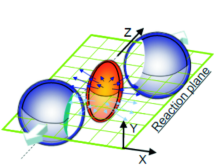 A note on the canonical approach to hydrodynamics and linear response theoryLuca Martinoia, and Rajeev SinghActa Physica Polonica B, Feb 2025
A note on the canonical approach to hydrodynamics and linear response theoryLuca Martinoia, and Rajeev SinghActa Physica Polonica B, Feb 2025This note provides a comprehensive examination of the various approaches to formulating relativistic hydrodynamics, with a particular emphasis on the canonical approach. Relativistic hydrodynamics plays a crucial role in understanding the behavior of fluids in high-energy astrophysical phenomena and heavy-ion collisions. The canonical approach is explored in detail, highlighting its foundational principles, mathematical formulations, and practical implications in modeling relativistic fluid dynamics. Following this, we delve into the linear response theory, elucidating its relevance in the context of hydrodynamics. We analyze the response of relativistic fluids to external perturbations, discussing the theoretical framework and key results. This dual focus aims to bridge the gap between theoretical foundations and practical applications, offering a robust perspective on the dynamic interplay between relativistic hydrodynamics and linear response theory.
@article{Martinoia:2024hip, author = {Martinoia, Luca and Singh, Rajeev}, title = {{A note on the canonical approach to hydrodynamics and linear response theory}}, eprint = {2408.10698}, archiveprefix = {arXiv}, primaryclass = {hep-th}, journal = {Acta Physica Polonica B}, doi = {https://doi.org/10.5506/APhysPolB.56.1-A4}, month = feb, volume = {56}, pages = {44}, year = {2025}, google_scholar_id = {roLk4NBRz8UC} }
2024
- JHEP
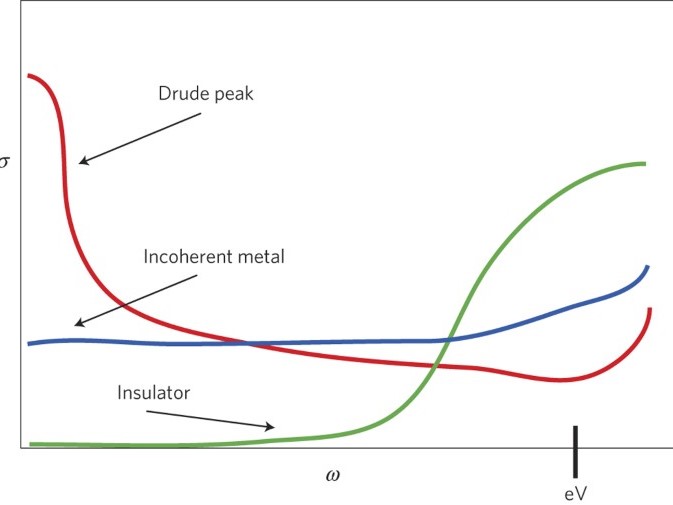 Dissipative electrically driven fluidsAndrea Amoretti, Daniel K. Brattan, Luca Martinoia, and Jonas RongenJHEP, Dec 2024
Dissipative electrically driven fluidsAndrea Amoretti, Daniel K. Brattan, Luca Martinoia, and Jonas RongenJHEP, Dec 2024We consider entropy generating flows for fluids that achieve a steady state in the presence of a driving electric field. Having chosen one among the space of stationarity constraints that define such flows we show how energy and momentum relaxation are related in the presence of dissipation. Furthermore, we find that if such a fluid obeys Onsager reciprocity then the incoherent conductivity must be identically zero and consequently makes no contribution to the observable AC or DC charge conductivities.
@article{Amoretti:2024jig, author = {Amoretti, Andrea and Brattan, Daniel K. and Martinoia, Luca and Rongen, Jonas}, title = {{Dissipative electrically driven fluids}}, eprint = {2407.18856}, archiveprefix = {arXiv}, primaryclass = {cond-mat.stat-mech}, journal = {JHEP}, publisher = {Springer}, month = dec, doi = {https://doi.org/10.1007/JHEP12(2024)114}, year = {2024}, volume = {12}, pages = {114}, google_scholar_id = {_FxGoFyzp5QC} } - Phys.Rev.E
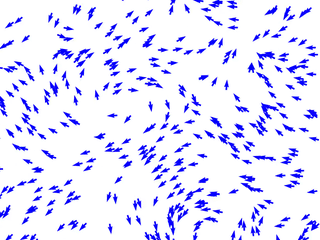 Thermodynamic constraints and exact scaling exponents of flocking matterAndrea Amoretti, Daniel K. Brattan, and Luca MartinoiaPhys. Rev. E, Nov 2024
Thermodynamic constraints and exact scaling exponents of flocking matterAndrea Amoretti, Daniel K. Brattan, and Luca MartinoiaPhys. Rev. E, Nov 2024We use advances in the formalism of boost agnostic passive fluids to constrain transport in polar active fluids, which are subsequently described by the Toner-Tu equations. Acknowledging that the system fundamentally breaks boost symmetry, we compel what were previously entirely phenomenological parameters in the Toner-Tu model to satisfy precise relationships among themselves. Consequently, we propose a thermodynamic argument to determine the scalings of the transport coefficients under dynamical renormalization group flow given that the scaling of the noise correlator is exact, as has been supported numerically. These scalings perfectly agree with the results of recent state-of-the-art numerical simulation and experiments.
@article{Amoretti:2024obt, author = {Amoretti, Andrea and Brattan, Daniel K. and Martinoia, Luca}, title = {{Thermodynamic constraints and exact scaling exponents of flocking matter}}, eprint = {2405.02283}, archiveprefix = {arXiv}, primaryclass = {cond-mat.stat-mech}, doi = {10.1103/PhysRevE.110.054108}, journal = {Phys. Rev. E}, publisher = {American Physical Society,}, volume = {110}, number = {5}, pages = {054108}, month = nov, year = {2024}, google_scholar_id = {Se3iqnhoufwC} } - JHEP
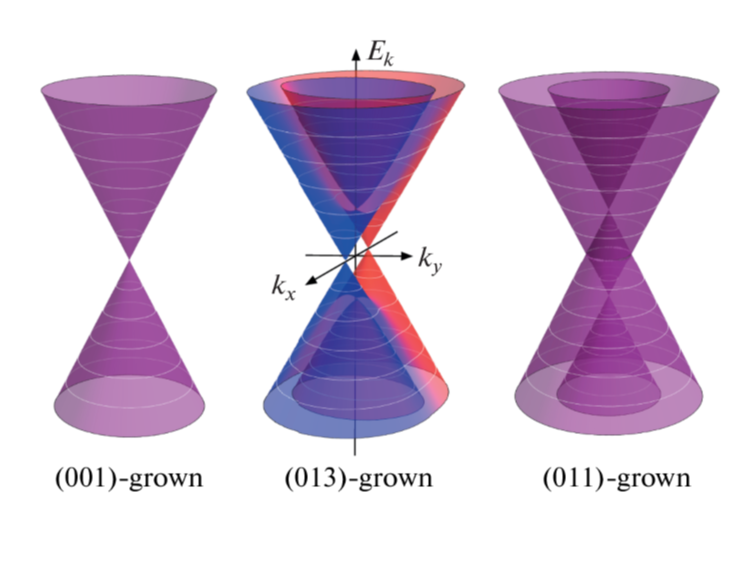 Relaxation terms for anomalous hydrodynamic transport in Weyl semimetals from kinetic theoryJHEP, Feb 2024
Relaxation terms for anomalous hydrodynamic transport in Weyl semimetals from kinetic theoryJHEP, Feb 2024We consider as a model of Weyl semimetal thermoelectric transport a \((3+1)\)-dimensional charged, relativistic and relaxed fluid with a \(U(1)_V\times U(1)_ A\) chiral anomaly. We take into account all possible mixed energy, momentum, electric and chiral charge relaxations, and discover which are compatible with electric charge conservation, Onsager reciprocity and a finite DC conductivity. We find that all relaxations respecting these constraints necessarily render the system open and violate the second law of thermodynamics. We then demonstrate how the relaxations we have found arise from kinetic theory and a modified relaxation time approximation. Our results lead to DC conductivities that differ from those found in the literature opening the path to experimental verification.
@article{Amoretti:2023hpb, author = {Amoretti, Andrea and Brattan, Daniel K. and Martinoia, Luca and Matthaiakakis, Ioannis and Rongen, Jonas}, title = {{Relaxation terms for anomalous hydrodynamic transport in Weyl semimetals from kinetic theory}}, eprint = {2309.05692}, archiveprefix = {arXiv}, primaryclass = {hep-th}, reportnumber = {CPHT-RR060.092023}, doi = {10.1007/JHEP02(2024)071}, journal = {JHEP}, publisher = {Springer}, volume = {02}, pages = {071}, month = feb, year = {2024}, google_scholar_id = {Y0pCki6q_DkC} }
2023
- Phys.Rev.D
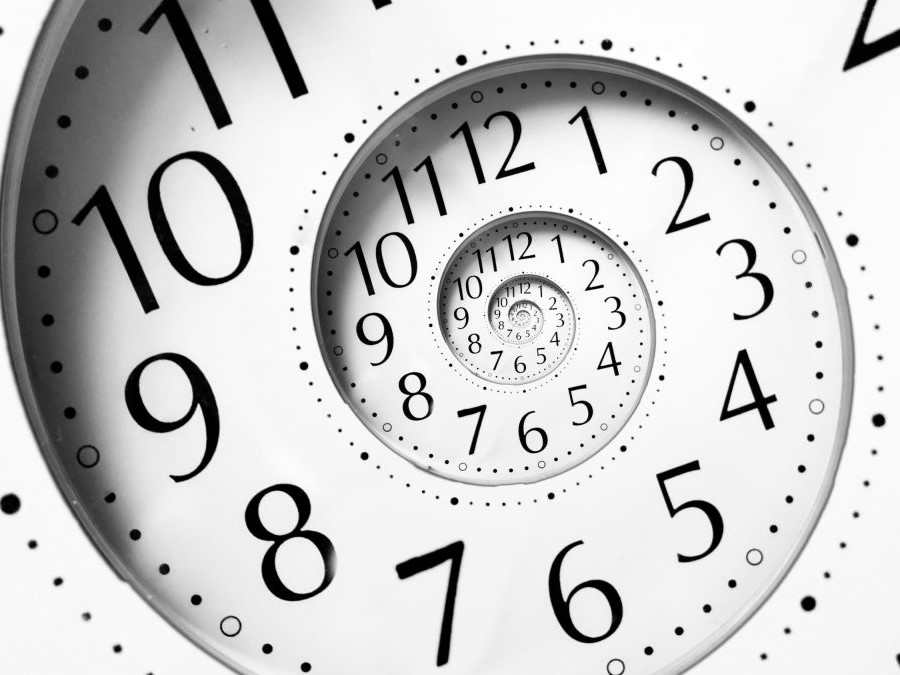 Restoring time-reversal covariance in relaxed hydrodynamicsPhys. Rev. D, Sep 2023
Restoring time-reversal covariance in relaxed hydrodynamicsPhys. Rev. D, Sep 2023In hydrodynamics, for generic relaxations, the stress tensor and \(U(1)\) charge current two-point functions are not time-reversal covariant. This remains true even if the Martin-Kadanoff procedure happens to yield Onsager reciprocal correlators. We consider linearized relativistic hydrodynamics on Minkowski space in the presence of energy, \(U(1)\) charge, and momentum relaxation. We then show how one can find the minimal relaxed hydrodynamic framework that does yield two-point functions consistent with time-reversal covariance. We claim the same approach naturally applies to boost agnostic hydrodynamics and its limits (e.g., Carrollian, Galilean, and Lifshitz fluids).
@article{Amoretti:2023vhe, author = {Amoretti, Andrea and Brattan, Daniel K. and Martinoia, Luca and Matthaiakakis, Ioannis}, title = {{Restoring time-reversal covariance in relaxed hydrodynamics}}, eprint = {2304.01248}, archiveprefix = {arXiv}, primaryclass = {hep-th}, reportnumber = {CPHT-RR015.042023}, doi = {10.1103/PhysRevD.108.056003}, journal = {Phys. Rev. D}, publisher = {American Physical Society,}, volume = {108}, number = {5}, pages = {056003}, month = sep, year = {2023}, preview2 = {PRD.jpg}, google_scholar_id = {zYLM7Y9cAGgC} } - Phys.Rev.D
 Leading order magnetic field dependence of conductivities in anomalous hydrodynamicsPhys. Rev. D, Jul 2023
Leading order magnetic field dependence of conductivities in anomalous hydrodynamicsPhys. Rev. D, Jul 2023We show that literature results claimed for the magnetic field dependence of the longitudinal conductivity in anomalous first-order hydrodynamics are frame dependent at this derivative order. In particular, we focus on \((3+1)\)-dimensional hydrodynamics in the presence of a constant \(O(∂)\) magnetic field with a \(U(1)\) chiral anomaly and demonstrate that, for constitutive relations up to and including order one in derivatives, the anomaly drops out of the longitudinal conductivity. In particular, magnetic field dependent terms that were previously found in the literature only enter the nonzero frequency thermoelectric conductivities through explicitly frame dependent pieces indicating that they are not physical. This issue can be avoided entirely by incorporating the magnetic field into the fluid’s equilibrium state.
@article{Amoretti:2022vxq, author = {Amoretti, Andrea and Brattan, Daniel K. and Martinoia, Luca and Matthaiakakis, Ioannis}, title = {{Leading order magnetic field dependence of conductivities in anomalous hydrodynamics}}, eprint = {2212.09761}, archiveprefix = {arXiv}, primaryclass = {hep-th}, reportnumber = {CPHT-RR064.122022}, doi = {10.1103/PhysRevD.108.016003}, journal = {Phys. Rev. D}, publisher = {American Physical Society,}, volume = {108}, number = {1}, pages = {016003}, month = jul, year = {2023}, preview2 = {PRD.jpg}, google_scholar_id = {Tyk-4Ss8FVUC} } - JHEP
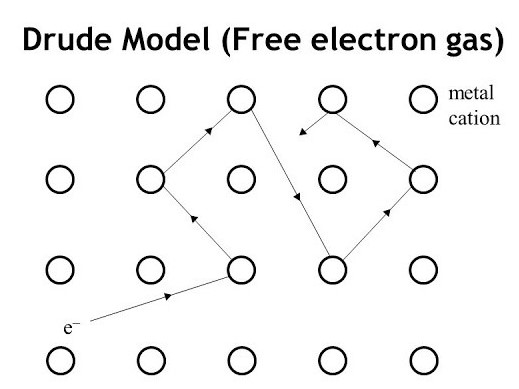 Non-dissipative electrically driven fluidsJHEP, May 2023
Non-dissipative electrically driven fluidsJHEP, May 2023Existing hydrodynamic models of charged fluids consider any external electric field acting on the fluid as either first order in the hydrodynamic derivative expansion and completely arbitrary or zeroth order but constrained by the fluid’s chemical potential. This is in tension with experiments on charged fluids, where the electric field is both zeroth order and completely arbitrary. In this work, we take the first step at resolving this conundrum by introducing a new class of hydrodynamic stationary states, including an arbitrary zeroth order electric field, upon which hydrodynamics can be built. We achieve this by first writing down the hydrostatic constitutive relations for a boost-agnostic charged fluid up to first order in derivatives. Then we introduce suitable energy and momentum relaxation terms to balance the influence of the electric field on the fluid. This analysis leads to a new hydrostatic constraint on the spatial fluid velocity, which can be used to define our class of states. This constraint generalizes to the realm of hydrodynamics a similar constraint on the velocity found in the Drude model of electronic transport. Our class of states exhibits non-trivial thermo-electric transport even at ideal order, since it hosts non-zero DC electric and heat currents. We derive the explicit form of the corresponding conductivities and show they depend non-linearly on the electric field.
@article{Amoretti:2022ovc, author = {Amoretti, Andrea and Brattan, Daniel K. and Martinoia, Luca and Matthaiakakis, Ioannis}, title = {{Non-dissipative electrically driven fluids}}, eprint = {2211.05791}, archiveprefix = {arXiv}, primaryclass = {hep-th}, doi = {10.1007/JHEP05(2023)218}, journal = {JHEP}, publisher = {Springer}, volume = {05}, pages = {218}, month = may, year = {2023}, preview2 = {JHEP.jpg}, google_scholar_id = {2osOgNQ5qMEC} }
2022
- Phys.Rev.Research
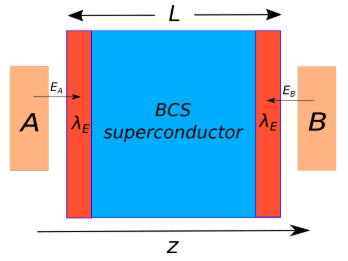 Destroying superconductivity in thin films with an electric fieldAndrea Amoretti, Daniel K. Brattan, Nicodemo Magnoli, Luca Martinoia, Ioannis Matthaiakakis, and Paolo SolinasPhys. Rev. Res., Sep 2022
Destroying superconductivity in thin films with an electric fieldAndrea Amoretti, Daniel K. Brattan, Nicodemo Magnoli, Luca Martinoia, Ioannis Matthaiakakis, and Paolo SolinasPhys. Rev. Res., Sep 2022In this paper, we use a Ginzburg-Landau approach to show that a suitably strong electric field can drive a phase transition from a superconductor to a normal metal. The transition is induced by taking into account corrections to the permittivity due to the superconductive gap and persists even when screening effects are considered. We test the model against recent experimental observations in which a strong electric field has been observed to control the supercurrent in superconducting thin films. We find excellent agreement with the experimental data and are able to explain several observed features. We additionally suggest a way to test our theoretical proposal via superconductor-superconductor electron tunneling.
@article{Amoretti:2022smp, author = {Amoretti, Andrea and Brattan, Daniel K. and Magnoli, Nicodemo and Martinoia, Luca and Matthaiakakis, Ioannis and Solinas, Paolo}, title = {{Destroying superconductivity in thin films with an electric field}}, eprint = {2202.00687}, archiveprefix = {arXiv}, primaryclass = {cond-mat.supr-con}, doi = {10.1103/PhysRevResearch.4.033211}, journal = {Phys. Rev. Res.}, publisher = {American Physical Society,}, volume = {4}, number = {3}, pages = {033211}, month = sep, year = {2022}, preview2 = {PRR.png}, google_scholar_id = {9yKSN-GCB0IC} }
2021
- JHEP
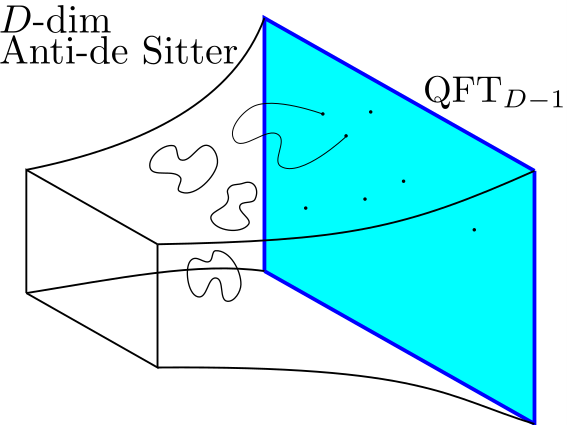 Hydrodynamic magneto-transport in holographic charge density wave statesAndrea Amoretti, Daniel Arean, Daniel K. Brattan, and Luca MartinoiaJHEP, Nov 2021
Hydrodynamic magneto-transport in holographic charge density wave statesAndrea Amoretti, Daniel Arean, Daniel K. Brattan, and Luca MartinoiaJHEP, Nov 2021We employ hydrodynamics and gauge/gravity to study magneto-transport in phases of matter where translations are broken (pseudo-)spontaneously. First we provide a hydrodynamic description of systems where translations are broken homogeneously at nonzero lattice pressure and magnetic field. This allows us to determine analytic expressions for all the relevant transport coefficients. Next we construct holographic models of those phases and determine all the DC conductivities in terms of the dual black hole geometry. Combining the hydrodynamic and holographic descriptions we obtain analytic expression for the AC thermo-electric correlators. These are fixed in terms of the black hole geometry and a pinning frequency we determine numerically. We find an excellent agreement between our hydrodynamic and holographic descriptions and show that the holographic models are good avatars for the study of magneto-phonons.
@article{Amoretti:2021lll, author = {Amoretti, Andrea and Arean, Daniel and Brattan, Daniel K. and Martinoia, Luca}, title = {{Hydrodynamic magneto-transport in holographic charge density wave states}}, eprint = {2107.00519}, archiveprefix = {arXiv}, primaryclass = {hep-th}, doi = {10.1007/JHEP11(2021)011}, journal = {JHEP}, volume = {11}, pages = {011}, month = nov, year = {2021}, preview2 = {JHEP.jpg}, google_scholar_id = {d1gkVwhDpl0C} }
Thesis
2024
- PhD thesis
 Developments in quasihydrodynamicsLuca MartinoiaUniversity of Genoa , Mar 2024
Developments in quasihydrodynamicsLuca MartinoiaUniversity of Genoa , Mar 2024At its core, hydrodynamics is a many-body low-energy effective theory for the long-wavelength, long-timescale dynamics of conserved charges in systems close to thermodynamic equilibrium. It has a wide range of applications spanning from nuclear physics, astrophysics, cosmology, and more recently strongly-interacting electronic phases of matter. In solid-state systems, however, symmetries are often only approximate, and softly broken by the presence of the lattice, impurities, and defects, or because the symmetry is accidental. Therefore, the hydrodynamic regime must be expanded to include weak non-conservation effects, which lead to a theory known as quasihydrodynamics. In this thesis we make progress in understanding the theory of (quasi) hydrodynamics, with a specific focus on applications to condensed matter systems and their holographic description.
@phdthesis{Martinoia:2024cbw, author = {Martinoia, Luca}, title = {{Developments in quasihydrodynamics}}, eprint = {2403.14254}, archiveprefix = {arXiv}, primaryclass = {hep-th}, doi = {10.15167/martinoia-luca_phd2024-03-01}, school = {University of Genoa}, month = mar, year = {2024}, google_scholar_id = {WF5omc3nYNoC} }
2020
- Master thesis
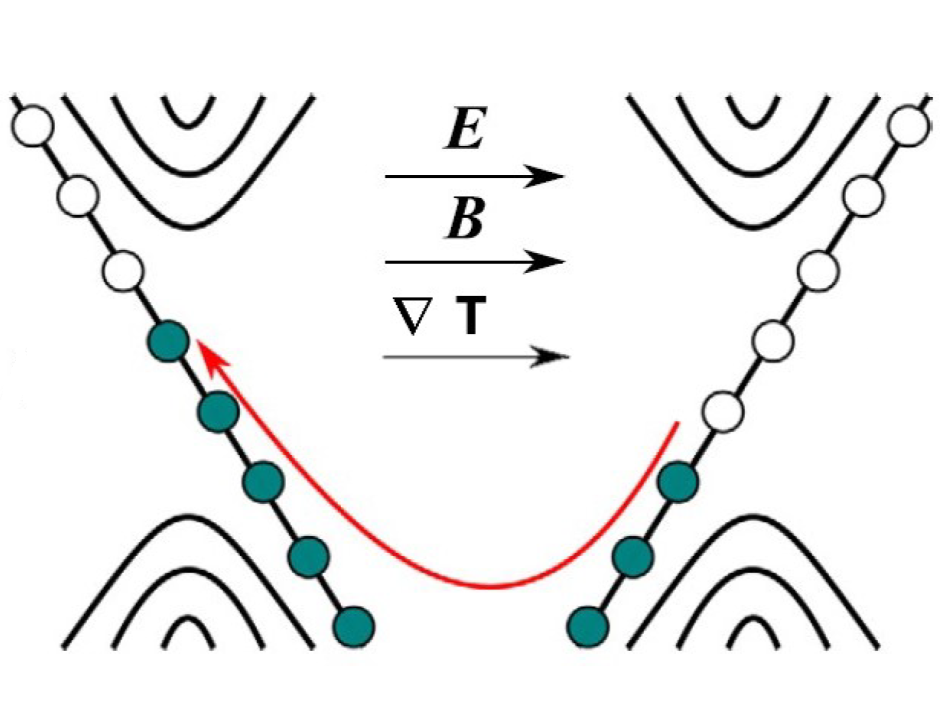 Anomalous hydrodynamic description of thermoelectric transport in a Weyl semimetalLuca MartinoiaUniversity of Genoa , Sep 2020
Anomalous hydrodynamic description of thermoelectric transport in a Weyl semimetalLuca MartinoiaUniversity of Genoa , Sep 2020@mastersthesis{Martinoia:2021, author = {Martinoia, Luca}, title = {{Anomalous hydrodynamic description of thermoelectric transport in a Weyl semimetal}}, school = {University of Genoa}, month = sep, year = {2020}, }









